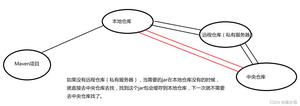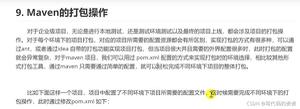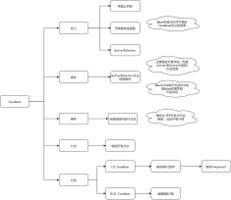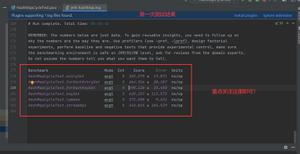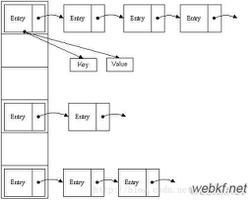LRU Cache java实现

要求:
- get(key):如果key在cache中,则返回对应的value值,否则返回null
- set(key,value):如果key不在cache中,则将该(key,value)插入cache中(注意,如果cache已满,则必须把最近最久未使用的元素从cache中删除);如果key在cache中,则重置value的值。
- set和get的时间复杂度都是O(1)。
两个map
/**
* 思路:时间复杂度是O(1),一下子想到的是map。但是怎么进行淘汰呢?需要记录时间,且查找的复杂度也是O(1),那也用map吧。
* put之前,需要先查看是否包含key,如果包含,删掉之前的数据,再放进新的数据,且把key的访问时间更新。淘汰最早访问数据的时候,还需要根据访问时间查询key。
* 所以,需要的操作包括:根据key获取value和access;根据access获取key。
*/
public class MyLRUMapSample<K, V> {
//cache的容量
private int capacity;
//存储key-value/access的map
private HashMap<K, Pair<V>> valueMap;
//存储access-key的map,使用SortedMap,对access进行排序
private SortedMap<Long, K> accessKeyMap;
public MyLRUMapSample(){}
public MyLRUMapSample(int capacity){
this.capacity = capacity;
valueMap = new HashMap<K, Pair<V>>();
accessKeyMap = new TreeMap<Long, K>();
}
public V get(K key){
if(!valueMap.containsKey(key)){
return null;
}
//修改access
Long access = accessKeyMap.lastKey() + 1;
accessKeyMap.remove(valueMap.get(key).access);
accessKeyMap.put(access, key);
valueMap.get(key).access = access;
return valueMap.get(key).value;
}
public void put(K key, V value){
//如果含有值,则更新
if(valueMap.containsKey(key)){
Long oldAccess = valueMap.get(key).access;
accessKeyMap.remove(oldAccess);
valueMap.remove(key);
}
//如果存储已满,则淘汰掉最早访问的
if(valueMap.size() >= capacity){
Long oldAccess = accessKeyMap.firstKey();
valueMap.remove(accessKeyMap.get(oldAccess));
accessKeyMap.remove(oldAccess);
}
//添加最新的数据
Long access = accessKeyMap.isEmpty() ? 0 : accessKeyMap.lastKey() + 1;
valueMap.put(key, new Pair(access, value));
accessKeyMap.put(access, key);
}
//访问时间和value值
class Pair<V>{
public Long access;
public V value;
public Pair(){}
public Pair(Long access, V value){
this.access = access;
this.value = value;
}
}
public K getOldestKey(){
return accessKeyMap.isEmpty() ? null : accessKeyMap.get(accessKeyMap.firstKey());
}
public K getLatestKey(){
return accessKeyMap.isEmpty() ? null : accessKeyMap.get(accessKeyMap.lastKey());
}
public static void main(String[] args) {
LinkedListMapLRUSample<Integer, Integer> sample = new LinkedListMapLRUSample<Integer, Integer>(2);
Assert.check(sample.getLatestKey() == null);
Assert.check(sample.get(2) == null);
sample.put(2, 1);
sample.put(2, 2);
Assert.check(sample.get(2).intValue() == 2);
sample.put(1, 2);
sample.put(1, 3);
Assert.check(sample.get(1) == 3);
Assert.check(sample.get(2).intValue() == 2);
sample.put(3, 3);
Assert.check(sample.get(1) == null);
}
}
双向链表+hashMap
/** * 使用LinkedList存储数据,从头部插入,从尾部淘汰。这样就保证了容量和淘汰规则正确性。
* 使用hashMap,通过key找到value。
*/
public class LinkedListMapLRUSample<K,V> {
class Node<K, V>{
public K key;
public V value;
public Node preNode;
public Node nextNode;
public Node(){}
public Node(K key, V value, Node preNode, Node nextNode){
this.key = key;
this.value = value;
this.preNode = preNode;
this.nextNode = nextNode;
}
}
private Node<K,V> head;
private Node<K,V> tail;
private HashMap<K,Node<K, V>> valueMap;
private int capacity;
public LinkedListMapLRUSample(){}
public LinkedListMapLRUSample(int capacity){
this.capacity = capacity;
valueMap = new HashMap<K,Node<K, V>>();
}
public void put(K key, V value){
if(head == null){
head = new Node(key, value, null, null);
tail = head;
valueMap.put(key, head);
return;
}
//如果已经包含了数据,需要更新
if(valueMap.containsKey(key)){
valueMap.get(key).value = value;
moveToHead(key);
return;
}
//满容量,需要淘汰掉最旧的数据
if(valueMap.size() >= capacity){
valueMap.remove(tail.key);
tail = tail.preNode;
if(tail != null){
tail.nextNode = null;
}
}
insertAsHead(key, value);
}
private void insertAsHead(K key, V value){
//在头部添加新节点
Node target = new Node(key, value, null, head);
if(head != null){
head.preNode = target;
target.nextNode = head;
}
valueMap.put(key, target);
head = target;
}
private void moveToHead(K key){
Node target = valueMap.get(key);
//头部元素
if(target.preNode == null){
return;
}
//尾部元素
if(target.nextNode == null){
tail = target.preNode;
tail.nextNode = null;
}else{
target.preNode.nextNode = target.nextNode;
target.nextNode.preNode = target.preNode;
}
target.preNode = null;
target.nextNode = head;
head.preNode = target;
head = target;
}
public V get(K key){
if(!valueMap.containsKey(key)){
return null;
}
moveToHead(key);
return valueMap.get(key).value;
}
public K getLatestKey(){
return head == null ? null : head.key;
}
public K getOldestKey(){
return tail == null ? null : tail.key;
}
public static void main(String[] args) {
LinkedListMapLRUSample<Integer, Integer> sample = new LinkedListMapLRUSample<Integer, Integer>(2);
Assert.check(sample.getLatestKey() == null);
Assert.check(sample.get(2) == null);
sample.put(2,1);
sample.put(2, 2);
Assert.check(sample.get(2).intValue() == 2);
sample.put(1, 2);
sample.put(1, 3);
Assert.check(sample.get(1) == 3);
Assert.check(sample.get(2).intValue() == 2);
sample.put(3, 3);
Assert.check(sample.get(1) == null);
}
}
需要根据访问时间或者插入时间进行排序时,考虑使用双向链表。
最先插入淘汰和最少访问淘汰
- 最先插入淘汰,即FIFO。也就是要求set操作时,新数据放在head,get操作不需要移动。那么,只需要在get操作的时候直接返回valueMap中的数据即可。
- 最少访问淘汰,是按照访问次数排序,将访问次数最少的数据删除。
可以使用两个map实现,valueMap(HashMap)和accessCountMap(SortedMap)。accessCount初始为1,get/put时,accessCount自增,并按照accessCount排序。
如果用数组和map实现,就需要accessCount自增后,进行重排序;或者在需要淘汰的时候进行重排序。
LinkedHashMap源码解读
LinkedHashMap使用一个双向链表加一个HashMap。同时有一个成员变量accessOrder控制淘汰策略:为true 表示按照LRU方式淘汰,false表示按照FIFO方式淘汰。
另外还有一个方法控制是否删除最旧的数据:
protected boolean removeEldestEntry(Map.Entry<K,V> eldest) { return false;
}
//put新数据的时候,检查是否需要删除最旧的数据
void addEntry(int hash, K key, V value, int bucketIndex) {
super.addEntry(hash, key, value, bucketIndex);
// Remove eldest entry if instructed
Entry<K,V> eldest = header.after;
if (removeEldestEntry(eldest)) {
removeEntryForKey(eldest.key);
}
}
使用LinkedHashMap实现LRUCache:
public class LinkedHashMapLRUSample<K, V> extends LinkedHashMap<K, V>{ private int capacity;
public LinkedHashMapLRUSample(){}
public LinkedHashMapLRUSample(int capacity){
super(16, 0.75f, true);
this.capacity = capacity;
}
@Override
protected boolean removeEldestEntry(Map.Entry<K, V> eldest) {
return this.size() > capacity;
}
public static void main(String[] args) {
LinkedHashMapLRUSample<Integer, Integer> sample = new LinkedHashMapLRUSample<Integer, Integer>(2);
Assert.check(sample.get(2) == null);
sample.put(2,1);
sample.put(2, 2);
Assert.check(sample.get(2).intValue() == 2);
sample.put(1, 3);
Assert.check(sample.get(1) == 3);
Assert.check(sample.get(2).intValue() == 2);
sample.put(3, 3);
Assert.check(sample.get(1) == null);
}
}
参考
缓存算法和实现 : 对各种缓存算法做了说明。
LRU算法机器变种
以上是 LRU Cache java实现 的全部内容, 来源链接: utcz.com/z/392110.html

